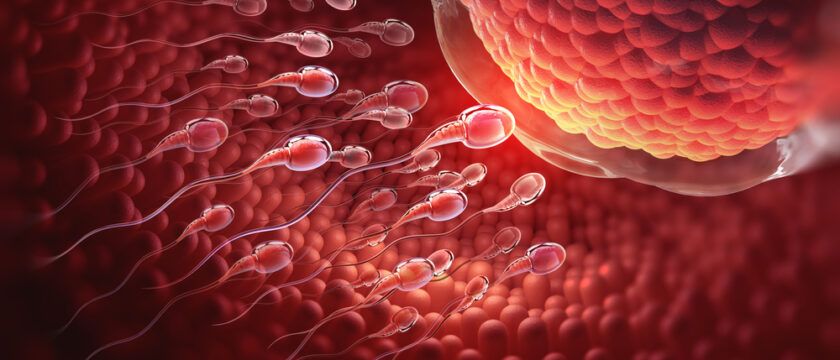The Neuroscience of Orgasm: Understanding How the Brain Responds to Sexual Stimulation
By Molly Ellis, Licensed Naturopathic Doctor
Last Updated on June 10th, 2025 / Published on January 13, 2025

Orgasm is described as the ultimate act of sexual pleasure. It is a complex physiological and psychological process that involves the activation of different regions of the brain. Neuroscientists have been studying the neural mechanisms underlying sexual arousal, orgasm, and pleasure for several decades. While orgasms are often studied in the context of sexual behavior and reproductive health, they also have significant implications on one’s mental health and overall well-being.
The basics of orgasm
Before diving into the neuroscience of orgasm, let’s understand what happens during one. The term “orgasm” refers to the intense and pleasurable sensation that occurs during sexual activity. It can be experienced through a variety of sexual activities, including masturbation, oral sex, vaginal intercourse, and anal sex.
Sexual arousal and orgasm are mediated by the autonomic nervous system (ANS), which is a part of the peripheral nervous system that controls involuntary functions in the body such as heart rate, breathing, digestion, and glandular secretion. The ANS is divided into two branches: the sympathetic nervous system, which is responsible for the “fight or flight” response, and the parasympathetic nervous system, which promotes the “rest and digest” response.
During sexual arousal, both the sympathetic nervous system and parasympathetic nervous system are activated. The former results in increasing the heart rate, blood pressure, and respiration, while the latter leads to an increase in blood flow to the genital area and the release of vaginal lubrication in women and penile erection in men.
Orgasm is the climax of sexual arousal and involves a series of rhythmic contractions of the muscles in the genital area, accompanied by intense pleasure and release of tension. The experience of orgasm is mediated by the release of neurotransmitters, such as dopamine, oxytocin, and endorphins.
Neurochemicals involved in orgasm
Dopamine, a neurotransmitter associated with reward and motivation, is released in response to sexual stimulation and plays a key role in the experience of pleasure and desire. Moreover, oxytocin, also known as the “love hormone,” is released during orgasm and is associated with feelings of bonding and attachment. Interestingly, it also stimulates uterine contractions during childbirth and lactation.
Further, endorphins—a group of neurotransmitters that act as natural painkillers—are also released during orgasm. This is why some people report feeling a sense of euphoria and relaxation after orgasm. Additionally, endorphins are believed to play a role in reducing stress and anxiety, leading to positive effects on mental health and well-being.
Orgasm and activation of different regions of the brain
The experience of orgasm is not limited to the genitals; it involves the activation of different regions of the brain. Studies have shown that sexual stimulation activates the limbic system, a group of structures in the brain that is involved in emotions, motivation, and memory. The hypothalamus, a region located in the limbic system, is particularly important in regulating sexual behavior and orgasm.
The prefrontal cortex, a region located at the front of the brain, is also involved in the experience of orgasm. This part is responsible for executive functions, such as decision-making, planning, and controlling impulsive behavior. During arousal and orgasm, the prefrontal cortex is temporarily deactivated, which may explain why people may engage in risky sexual behavior during this time.
The striatum, a region located deep within the brain, is also involved in the experience of pleasure and reward. It is known to promote addictive behaviors and is believed to be responsible for the development of sexual addiction. Studies have shown that the striatum is activated during arousal and orgasm, indicating that it may play a role in the rewarding aspects of sexual behavior.
Neural mechanisms involved in arousal and orgasm
Let’s delve deeper into the neural mechanisms underlying the experience of orgasm. The rhythmic contractions of the muscles in the genital area during orgasm are controlled by the spinal cord, which receives input from the brain. The signals from the brain to the spinal cord are transmitted through a network of nerves known as the pudendal nerve, which carries both sensory and motor functions. During arousal and orgasm, this nerve sends sensory signals from the genital area to the brain, which are processed by various regions such as the somatosensory cortex and the insula. The somatosensory cortex is the region of the brain that processes tangible sensory information, while the insula is involved in the processing of emotions and interoception (the perception of bodily sensations).
Neuroimaging studies have shown that the somatosensory cortex and the insula are activated during sexual stimulation and orgasm. The activation of the somatosensory cortex is thought to be responsible for the perception of genital sensations during arousal and orgasm. On the other hand, the insula is involved in the processing of emotional and bodily sensations, including those associated with sexual pleasure.
Moreover, the insula plays a role in the integration of sensory and emotional information during arousal and orgasm. This integration is believed to cause the subjective experience of sexual pleasure and orgasm.
The ventral tegmental area (VTA) is another region of the brain that is involved in the experience of orgasm. It is part of the mesolimbic dopamine system, which is involved in the processing of reward-related stimuli. The VTA receives input from the hypothalamus, amygdala, and prefrontal cortex, and sends signals to the nucleus accumbens (NAc), another region of the brain that is involved in reward processing. During sexual arousal and orgasm, there is increased activity in the VTA and NAc, which is thought to be responsible for the intense pleasure and reward associated with orgasm. The release of dopamine from the VTA and NAc leads to the activation of the reward system during sexual pleasure and orgasm
Causes of sexual dysfunction
Sexual dysfunction is a common problem that affects many people. Erectile dysfunction (ED) is the inability to achieve or maintain an erection sufficient for sexual intercourse, while female sexual dysfunction (FSD) encompasses various problems, such as lack of desire, difficulty in achieving orgasm, and pain during intercourse. The causes of sexual dysfunction are complex and can be related to various factors such as age, health status, medication use, and psychological factors.
Neuroscience research has shown that sexual dysfunction may be related to dysfunction in the neural circuits involved in arousal and orgasm. For example, some studies indicate that men with ED have reduced activity in the VTA and NAc during sexual stimulation, suggesting a dysfunction in the reward system. Other studies have shown that women with FSD have reduced activity in the insula and the somatosensory cortex during sexual stimulation, suggesting a dysfunction in the processing of genital sensations.
Understanding the neural mechanisms underlying sexual dysfunction may lead to the development of new treatments. For example, some studies have shown that pharmacological interventions that target the mesolimbic dopamine system may help in treating sexual dysfunction in both men and women.
In addition to the physical and psychological benefits of sexual pleasure, there are evolutionary and social aspects to it. From an evolutionary perspective, sexual pleasure and orgasm are considered a means of promoting reproductive success. The pleasure associated with sexual behavior may have encouraged individuals to engage in sexual activity, which in turn, increased the likelihood of reproduction.
Conclusion
The neuroscience of orgasm is a complex and fascinating topic that has been studied extensively by neuroscientists. Sexual arousal and orgasm involve various physiological and psychological processes that are mediated by the autonomic nervous system, neurotransmitters, and hormones. The release of dopamine, oxytocin, and endorphins during sexual stimulation and orgasm is responsible for the experience of intense pleasure and a sense of euphoria. Further, the hypothalamus, amygdala, and prefrontal cortex are key brain regions that are involved in the neural mechanisms underlying sexual arousal and orgasm. Understanding the neuroscience of orgasm can help us get insights into human sexuality and the development of new treatments for sexual dysfunction and other related conditions.
References:
Komisaruk BR, Wise N, Frangos E, Liu WC, Allen K, Brody S. Women’s clitoris, vagina, and cervix mapped on the sensory cortex: fMRI evidence. J Sex Med. 2011 Oct;8(10):2822-30. doi: 10.1111/j.1743-6109.2011.02388.x. Epub 2011 Jul 28. PMID: 21797981; PMCID: PMC3186818.
Georgiadis, J., Kringelbach, M. & Pfaus, J. Sex for fun: a synthesis of human and animal neurobiology. Nat Rev Urol 9, 486–498 (2012). https://doi.org/10.1038/nrurol.2012.151
Stoléru S, Fonteille V, Cornélis C, Joyal C, Moulier V. Functional neuroimaging studies of sexual arousal and orgasm in healthy men and women: a review and meta-analysis. Neurosci Biobehav Rev. 2012 Jul;36(6):1481-509. doi: 10.1016/j.neubiorev.2012.03.006. Epub 2012 Mar 28. PMID: 22465619.


